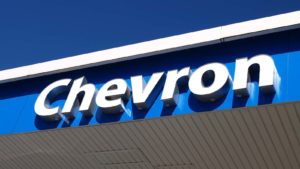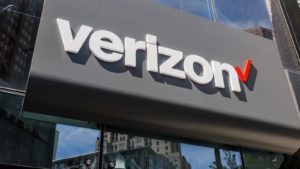Investing for the long-run is a robust approach for building wealth over time. Most seasoned investors would agree that time in the market is more important than timing the market. In other words, if you have a long-term perspective on the stock market and properly diversify your portfolio, it’s nearly always a good time to invest. Therefore, today I will discuss seven long-term stocks to buy and hold for a rich retirement.
Market history shows that over decades, the S&P 500 index has delivered average annual gains of about 8% each year. If we were to see such annual returns in the future, too, the proverbial $5,000 invested now would be worth — without any additions — well over $50,000 in 30 years.
And if that investor were to close out each year by adding $2,400 in additional savings, the total amount would be over $320,000. Investing an extra $2,400 a year would mean about being able to save $7 a day.
Given the increased volatility level in equities, hype about enticing meme stock returns and sky-high cryptocurrency prices, it could feel tempting to go after quick returns in the coming months. But the global economy is still recovering, and it’s now more critical than ever to focus on long-term stocks for a retirement-focused game plan.
Such an approach involves avoiding the short-term noise that often derails most investors. Market participants need not be scared out of the market because of daily headlines. A longer holding period also provides investors valuable time to ride out the bumps.
With that information, here are seven long-term stocks for buy-and-hold investors that should offer stable and lucrative returns throughout the decade:
- Brookfield Infrastructure Partners (NYSE:BIP)
- Chevron (NYSE:CVX)
- Coca-Cola (NYSE:KO)
- Dominion Energy (NYSE:D)
- Healthcare Trust of America (NYSE:HTA)
- Vanguard Growth Index Fund ETF (NYSEARCA:VUG)
- Verizon Communications (NYSE:VZ)
Long-Term Stocks: Brookfield Infrastructure Partners (BIP)

- 52-week range: $42.29 – $58.58
- Dividend Yield: 3.64%
Brookfield Infrastructure Partners is a master limited partnership (MLP) that owns and operates long-life infrastructure assets that generate stable cash flows. It focuses on acquiring infrastructure assets that have low maintenance capital costs and high barriers to entry.
Brookfield released second-quarter results in early August. Revenue increased 36% YOY to $2.7 billion. The company reported net income of $352 million, or 61 cents per diluted share, compared to a net loss of $61 million, or 25 cents loss per diluted share, in the prior-year quarter. Funds from operations of $394 million reflects an 18% YOY increase. Cash and equivalents ended the period at $1.28 billion.
On the results, CEO Sam Pollock remarked, “Our base business generated strong results in the second quarter, benefiting from the ongoing economic recovery. The recent completion of several large capital recycling initiatives has provided enhanced liquidity to support our robust pipeline of new investments.”
BIP owns water, energy, utility, transportation, and communications infrastructure worldwide. These assets offer essential services that are hard to replicate and generate a stable and recession-proof stream of cash flow.
For investors who prefer to avoid partnership taxes, the firm split its shares to launch Brookfield Infrastructure (NYSE:BIPC). BIPC shares provide an equivalent economic return to BIP shares.
BIP stock offers a dividend yield above 3.6% and is around $56, up 13% year-to-date (YTD). The stock looks cheap, currently trading at 1.6x trailing sales. Given its investment-grade credit rating, Brookfield Infrastructure is an attractive long-term opportunity for income investors.
Chevron (CVX)

- 52-week range: $65.16 – $113.11
- Dividend Yield: 5%
San Ramon, California-based Chevron is one of the most important oil majors with global exploration, production, and refining operations.
Chevron issued Q2 results in late July. Total revenue came in at $36 billion, up from $16 billion in the year-ago period. Adjusted earnings were $3.3 billion, or $1.71 per diluted share. A year ago, it reported an adjusted loss of $2.9 billion, or $1.56 per diluted share. Free cash flow for the quarter stood at $5.2 billion.
CEO Mike Wirth cited, “Second quarter earnings were strong, reflecting improved market conditions, combined with transformation benefits and merger synergies. Our free cash flow was the highest in two years due to solid operational and financial performance and lower capital spending.”
Chevron is a diversified oil company with solid fundamentals that offers a safe way to capitalize on a sustained oil and gas boom. While the company faces long-term headwinds due to the global transition toward green energy sources, economies around the world still predominantly rely on fossil fuels.
In 2020, Chevron purchased Noble Energy. The acquisition provides the company with low-cost, proven reserves and undeveloped resources that promise to enhance an already robust upstream portfolio.
CVX stock hovers at $107, up 27% YTD. It is trading at 14x forward earnings and 1.8x sales. Given the 5% dividend yield and leading market position, Chevron is a compelling stock for long-term income investors seeking exposure to high oil and gas prices.
Long-Term Stocks: Coca-Cola (KO)

- 52-week range: $47.30 – $57.56
- Dividend Yield: 3.10%
Atlanta, Georgia-based Coca-Cola is the world’s largest nonalcoholic beverage maker, owning and marketing nearly two dozen billion-dollar brands. While close to 70% of Coke’s unit sales are still from sodas, the firm has been diversifying into energy drinks, juices, coffee, and water.
Coca-Cola issued Q2 results in late July. Net revenue grew by 42% YOY to $10.1 billion. Non-GAAP net income came in at $2.9 billion, or 68 cents per diluted share, up from $1.8 billion, or 42 cents per diluted share, in the prior-year quarter. Cash and equivalents ended the period at $9.2 billion.
Following the announcement, CEO James Quincey remarked, “Our results in the second quarter show how our business is rebounding faster than the overall economic recovery, led by our accelerated transformation. As a result, we are encouraged and, despite the asynchronous nature of the recovery, we are raising our full year guidance.”
Coca-Cola is well-positioned to benefit from the global economic recovery now that restaurants, movie theaters, theme parks, and other leisure venues are reopening after the pandemic. The company generates more than 40% of its revenue from developing or emerging markets with rising middle classes and low per-capita soda consumption. Hence, its core business has plenty of room for growth as branded beverages widen their global reach.
KO stock hovers at $54, down 1% YTD. Shares are trading at 22x forward earnings and 6.5x trailing sales. Given its solid prospects, broad distribution network, and global scale, the recent dip in KO stock creates a valuable opportunity to buy a high-quality stock at a discount.
Dominion Energy (D)

- 52-week range: $67.85 – $86.95
- Dividend Yield: 3.47%
Richmond, Virginia-based Dominion Energy is an integrated energy company with approximately 30 gigawatts of electric generation capacity and more than 93,000 miles of electric transmission and distribution lines.
Management released Q2 results in early August. Revenue declined 2% YOY to $ 3.04 billion. Net income came in at $285 million, or 33 cents per diluted share, compared with a net loss of $1.2 billion, or $1.52 per diluted share, in the prior-year quarter.
In July 2020, Dominion sold its natural gas transmission and storage business to Berkshire Hathaway (NYSE:BRK.A, NYSE:BRK.B). After shedding its gas business, Dominion has become a pure-play regulated utility that generates more than 90% of its earnings from state-regulated gas and electric utilities. This implies a more steady stream of cash flow and predictable earnings.
Dominion now expects to deliver 6.5% annual earnings growth beginning in 2022, up from its prior growth guidance of 5%. As the gas business generated almost 25% of Dominion’s operating earnings, investors saw a 33% dividend cut last year. The Street expects dividend payments to begin growing at a rate of 6% starting next year.
Dominion shares are at $72 territory, down almost 4% YTD and 12% over the past year. The stock remains an attractive opportunity for long-term investors. D shares are trading at 17.7x forward earnings and 4.2x current sales.
Long-Term Stocks: Healthcare Trust of America (HTA)

- 52-week range: $23.39 – $33.05
- Dividend Yield: 3.94%
Scottsdale, Arizona-based Healthcare Trust of America is a healthcare facility real estate investment trust (REIT), founded in 2006. Since then, the group has invested more than $7 billion in medical office buildings, making it the largest dedicated REIT of this type of property stateside.
Healthcare Trust of America released Q2 results in early August. Total revenue increased by 5% YOY to $189 million. Net income came in at $38 million, or 17 cents per diluted share, up from $13.5 million, or 6 cents per diluted share, in the prior-year quarter. Cash and equivalents ended the period at $90 million.
The REIT usually tracks down buildings around hospitals, academic medical centers, and other primary healthcare systems. As less than 20% of medical office buildings are currently owned by institutions, the REIT expects to deliver significant growth in the coming years. Thanks to an investment-grade credit rating, HTA has access to affordable capital that it uses to consolidate this fragmented industry.
HTA is the only REIT of its kind to increase its dividend each of the last seven years. It now offers a 4% dividend yield. Yet, interested investors may consider waiting for a dip before taking a long position. HTA stock currently hovers at its 52-week high of $33 per share, and is up 20% YTD. Shares are trading at 9.7 times sales.
Vanguard Growth Index Fund ETF (VUG)

- 52-week Range: $218.28 – $309.59
- Dividend Yield: 0.52%
- Expense Ratio: 0.04% per year
Our next choice is an exchange-traded fund (ETF). The Vanguard Growth Index Fund ETF is a passively managed fund which provides broad exposure to large- and mid-capitalization U.S. companies that show growth characteristics.
VUG, which started trading in January 2004, tracks the CRSP US Large Cap Growth Index. The fund is heavily weighted toward technology (49%), followed by consumer discretionary (22.60%), industrials (12.10%). It currently has 286 holdings.
Leading names include Apple (NASDAQ:AAPL), Microsoft (NASDAQ:MSFT), Amazon (NASDAQ:AMZN), Alphabet (NASDAQ:GOOG) (NASDAQ:GOOGL) and Facebook (NASDAQ:FB). Top 10 holdings account for about 47% of net assets of $179.4 billion.
So far in 2021, the fund has returned over 25% and is up 16.5% YTD. A potential decline toward $285 would improve the margin of safety for buy-and-hold investors.
Long-Term Stocks: Verizon Communications (VZ)

- 52-week range: $51.11 – $61.95
- Dividend Yield: 4.99%
Verizon is America’s largest wireless service provider with about 91 million postpaid and 4 million prepaid phone customers. In addition, the company connects another 25 million data devices, like PCs and tablets, through its nationwide network.
The telecom issued Q2 results in late July. Consolidated total revenue surged 11% YOY to $33.8 billion. Net income came in at $5.95 billion, or $1.40 per diluted share, up from $4.8 billion, or $1.14 per diluted share, in the prior-year period. Cash and equivalents ended the quarter at $6.09 billion.
Thanks to its smartphone-related services, Verizon boasts a stable business that generates predictable cash flow every year. Over the past decade, the group has been investing heavily to meet the growing demand for wireless data and video and upgrade its network for 5G technology.
Understandably, the 5G transition offers significant tailwinds that should lead to continued revenue and earnings growth over the coming years. Analysts forecast annual EPS growth of nearly 4% over the next five years.
Despite these steady fundamentals, VZ stock is trading at its 52-week low of around $51 per share. It is down about 13% YTD. Verizon looks significantly undervalued, trading just at 9.6x forward earnings and 1.6x trailing sales.
Its depressed price limits downside risk and suggests potential upside valuation in the near term. With a 5% dividend yield and an investment-grade credit rating, VZ looks like an excellent long-term stock to hold for 2021 and beyond.
On the date of publication, Tezcan Gecgil did not have (either directly or indirectly) any positions in the securities mentioned in this article.
Tezcan Gecgil, Ph.D., has worked in investment management for over two decades in the U.S. and U.K. In addition to formal higher education in the field, she has also completed all three levels of the Chartered Market Technician (CMT) examination. Her passion is for options trading based on technical analysis of fundamentally strong companies. She especially enjoys setting up weekly covered calls for income generation.
